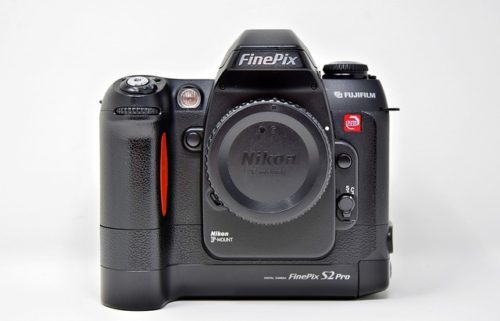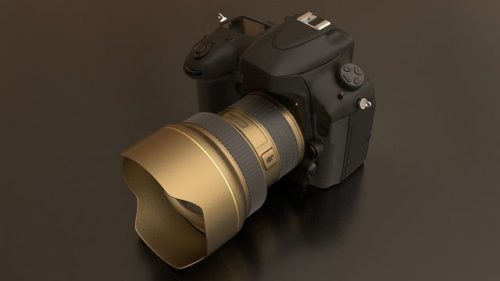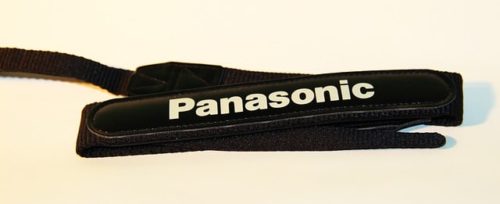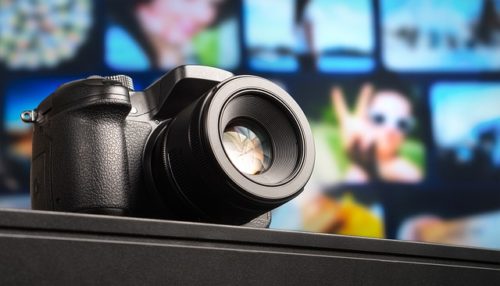So, what’s the best camera? That is “the question” because the people that are searching have so many options. Do you need a simple camera for the entire family to use? Or a more advanced DSLR or mirrorless version that will assist you in developing your camera skills? Or one that is intended for blogging and vlogging, using a flip-around display and 4K video?
Our guide covers the whole spectrum, from the best all-around cameras for most users, through cameras for beginners, cameras for enthusiast for and everyday snappers. You may also require to have a look at a number of our other guides, for example, best cameras for children, the best cameras for vlogging and the best cameras for beginners.
You will see a lot of discussion about DSLR vs. Mirrorless cameras, incidentally, but the truth is that both kinds are great, and both have their advantages and disadvantages. DSLRs aren’t the dinosaurs that mirrorless fans would have you think, and still, have a lot going for them.
If the price is your primary factor, there are plenty of cheap camera deals at the moment.

Selecting The Best Camera For You
If you are a pro or an expert, you’ll probably be looking at a full-frame DSLR or full-frame mirrorless camera, while practitioners and newcomers are searching for an interchangeable lens camera though something more economical and moderate will probably be better off using a smaller-format APS-C or Micro Four Thirds model.
If you do not want interchangeable lenses, however, a small camera with a fixed lens is an excellent option, and that is where you will find the most unique variety of camera types and costs, from innovative compact cameras for specialists with superzoom travel cameras and long-zoom bridge cameras through to easy, affordable point-and-shoot cameras that the entire family can use.
We start off with our top recommendations for all-around cameras for a variety of photography, choosing on cameras to suit every price level. Maybe you don’t want a DSLR or a mirrorless camera, and you’re looking for something simpler? We list our favorite cams for adventure, travel, or even simple family use. If you would like to record your life in a movie, why not check out the best action camera? Or perhaps you’ve got your sights set a bit higher, and you wish to update to a full-frame or professional camera? We have that covered also.
Keep reading to find the best cameras, irrespective of expertise, your experience, or budget!
1. Fujifilm X-T3
An excellent quality camera but without a price and the weight
Model: Mirrorless | Lens Bracket: Fujifilm X mounts | Sensor: APS-C |Megapixels: 26.1MP | Continuous shooting speed: 11fps | Viewfinder: EVF | Monitor: EVF, 3,690k dots, 100% protection | Max video resolution: 4K | User level: Enthusiast/Professional
- Full Area AF coverage
- 4K video up to 60fps
- High-speed burst modes
- No in-body stabilization
Whether you want to shoot 4K movie, sports or all-round photographic subjects, The X-T3 does it brilliantly. It’s Fujifilm’s newest 26.1-megapixel APS-C format detector with 11fps constant shooting that goes up to a remarkable 30fps in 1.25x crop mode using its automatic shutter.
Fujifilm’s new autofocus system covers the entire image area, and it can capture 4K videos at 60/50fps, a feat that only specific video-centric cameras such as the Panasonic GH5S have been able to handle until now. The only thing needing is in-body stabilization, but in the context of everything this camera can do, that’s a minor issue.
2. Olympus OM-D E-M10 III
A cheaper although vibrant mirrorless camera you can fit in a coat pocket
Sort: User level: Beginner/enthusiast | Mirrorless | Megapixels: 16.1MP | Lens mount: Micro Four Thirds | Sensor: Micro Four Thirds | Display: 3-inch tilting touchscreen, 1,037,000 dots | Max burst speed: 8.6fps | Max video resolution: 4K | Viewfinder: Electronic |
- Very small body
- Wide external controls
- Mini 14-42mm’ pancake’ zoom
- Simply 16.1 million pixels
The Fujifilm X-T3 is an outstanding all-round camera, though its composure may be overkill for many users, and if the X-T3’s cost is also a little hard to take, the Olympus OM-D E-M10 Mark III makes a great lower-cost alternative that provides you a great deal of power and features for the money.
It uses a smaller 16-megapixel Micro Four Thirds sensor, but it carries a wide range of Olympus and Panasonic lenses, has a superb 5-axis in-body stabilization mode, records 4K video and features a vast choice of Olympus’s fairly good Art Filters. It is small but strong and a wonderful travel camera.
3. Nikon D3500
A DSLR is the cheapest way into ‘appropriate’ photography
Model: DSLR | Display: 3-inch fixed, 921,000 dots | Megapixels: 24.2MP | Sensor: APS-C | Viewfinder: Optical | Lens mount: Nikon F | Max video resolution: Total HD | User level: Beginner
- Great ergonomics
- Terrific image quality
- Versatile and affordable
- Fixed rear screen
Our first two options are mirrorless cameras. However, real DSLR Cameras are yet going influential. The truth is they provide excellent value for beginners — and the Nikon D3500 are an ideal example. There are many things the D3500 does not do — it’s a fixed rear screen that is not touch-sensitive, it does not have composite on-sensor autofocus, and it does not shoot 4K video.
However, its 24-megapixel sensor produces sharp, extremely-high, excellent images, Nikon’s most current AF-P retracting kit lens is a mini marvel and sharpens so promptly in live mode, yet without on-sensor phase-sensing autofocus. The D3500 handles well, it is user-friendly, it is stronger than it seems, and it is the perfect introduction to interchangeable lens photography.

4. Canon EOS Rebel SL3 / 250D
Type: DSLR | Max burst speed: 5fps | Sensor: APS-C | Max video resolution: 4K | Megapixels: 24.2MP | Display: 3in vari-angle touchscreen, 1,040,000 dots | Lens mount: Canon EF-S | User level: Beginner
- Simple to use
- Excellent live view autofocus
- 4K video
- Bigger mirrorless model
The Canon EOS Rebel SL3 (EOS 250D from the UK) is a terrific camera for beginners, because though it costs a bit more than entry-level models such as the Nikon D3500, it has plenty of features to make picture taking easier and more exciting and the capability to take on more advanced projects as your skills grow. The 24-megapixel APS-C sensor produces excellent results, but the star of this series is Canon’s superior Dual Pixel CMOS AF system, making the live view autofocus (when you use the back display instead of the viewfinder) incredibly fast and responsive.
Better still, the back screen is equally fully-articulating and touch-sensitive, so that you can shoot pictures at all kinds of odd angles, and for the first time in a DSLR at this price, it is possible to shoot 4K video, so one way or another this is the best DSLR for bloggers and vloggers.
5. Sony Alpha 6000
A mirrorless camera that’s old but good — a pint-sized powerhouse
Sort: Mirrorless | Sensor: APS-C | Lens Bracket: Sony E | Megapixels: 24.3MP | Monitor: 3-inch tilting, 921,600 dots | Continuous shooting speed: 11fps | Viewfinder: Electronic | Max video resolution: 1080p | User level: Beginner/enthusiast
- Superb AF system
- Terrific EVF
- No 4K video
- No touchscreen
DSLR cameras such as the Nikon D3500 are still popular because it’s tough to have a mirrorless camera with a viewfinder at anything like the same price. However, the Sony A6000 is the exception! Regardless of the arrival of the A6300 and A6500, the Sony A6000 stays in Sony’s Alpha lineup — and that is a smart move on Sony’s part.
While the latter two versions can satisfy people keen on shooting at 4K video and enthusiasts, the A6000 functions as a more affordable introduction to the machine — one which completely holds its own against more expensive cameras. Thanks in part to 179-point phase-detect AF system covered widely beyond the frame, it is especially adept at tracking moving subjects, with its burst shooting alternative helping you get the decisive moment.
This is a great mirrorless camera in this price, especially if you don’t need the bulk of a DSLR.
6. Panasonic TZ200/ZS200
A superzoom travel camera with a high-quality sensor.
Type: Compact | Sensor dimensions: 1-inch | Megapixels: 20.1MP | Lens: 26-390mm (equiv.) , f/3.3-6.4 | LCD: 3in fixed touchscreen, 1.24 million dots | Continuous shooting: 10fps | Max video resolution: 4K | Viewfinder: EVF | User level: Enthusiast
- Good 1-inch sensor
- Exceptional 15x zoom range
- Manual controls and raw files
- 4K video and 4K Photo
So far we have been looking at interchangeable lens DSLR and mirrorless cameras, but that is only one choice. Occasionally a fixed lens compact camera will be fine, especially if you would like to do a great deal of traveling, and if you’re more concerned with recording the moment than complaining over technicalities. A superzoom travel camera is the best solution, but most have tiny 1/2.3-inch sensors which limit their image quality.
The Panasonic TZ200/ZS200 is unique. It has a much bigger 1-inch sensor for much better pictures, matched up with a big 15x zoom — and yet it will fit in a coat pocket when it is powered down. Hence the TZ200/ZS200 is cheap, but it is surely among the greatest long-zoom travel cameras you can get, and it has controls and features which will please specialists.

7. Canon Ixus 185 HS
A pocket camera with a pocket-money price tag, for the whole family
Type: Compact | Sensor dimensions: 1/2.3in | Megapixels: 20MP | Lens: 28-224mm (equiv.) , f/3.2-6.9 | LCD: 2.7in fixed, 230,000 dots | Viewfinder: No | Continuous shooting: 0.8fps | Max video resolution: HD | User level: Beginner
- 8x zoom lens
- Low price
- Only HD video
- Small sensor
Our third compact camera option is different again. This time we’ve gone to get a camera that is effective, cheap, and functional enough for the entire family to use without worrying about it.
With its simple controls and small detector, the Ixus 185 is about as far away from a DSLR as a bicycle is from a Harley Davidson, but that is not the market it’s designed for. If you think of it instead as an alternative to a smartphone, it has A LOT going for it.
For a start, no smartphones are using 8x optical zoom, and the cost of this Ixus 185 means that you don’t have to lie awake at night wondering if you’ve got it adequately insured. It’s fantastic for children, teens, and adults who need a camera to take pictures with and to keep their mobile for making phone calls.
8. Canon PowerShot G1 X Mark III
DSLR quality and controls in a pocket-sized camera
Type: Compact | Megapixels: 24.2MP | Sensor dimensions: APS-C | Lens: 24-72mm, f/2.8-5.6 (equiv.) | LCD: 3in vari-angle touchscreen, 1.04 million dots | Viewfinder: EVF | Continuous shooting: 9fps | Max video resolution: Total HD | User level: Enthusiast/expert
- APS-C sensor
- 2 million pixels
- Fantastic image quality
- Small size
Pocket cameras do not always have to be simple point-and-shoot versions that swap picture quality for practicality, and at the opposite end of the scale to the Ixus 185 HS is the Canon PowerShot G1 X Mark III. This is Canon’s top PowerShot camera, and though it does not have the zoom range of some of the tinier compacts and bridge cameras, that is because it has a large APS-C sensor the same dimension as those in Canon’s supporters SLRs.
We have no idea how Canon has reviewed this sensor– and a 3x 24-72mm comparable zoom — into such a little body, and yet it managed to incorporate a digital viewfinder and a fully-articulating touchscreen display. The only drawback to this camera is the (reasonably) high cost and the fact that the maximum aperture of this lens falls to f/5.6 at full zoom — but this is still an awesome camera for experts and fans who do not like to carry around their primary camera all the time, or first-time buyers that desire DSLR quality without the bulk.
9. Canon EOS 6D II
The cheapest full-frame DSLR of Canon is remarkably capable
Type: DSLR | Sensor: Total frame | Megapixels: 26.2MP | Display: 3in vari-angle touchscreen, 1.04million dots | Viewfinder: Optical | Max burst speed: 6.5fps | Max video resolution: Total HD | User level: Enthusiast
- Vari-angle touchscreen
- Dual Pixel CMOS AF
- Value and versatility
- Full HD video
If you are a photographer upgrading an existing camera, quality and features will be high on your shopping list, and both are offered by the Canon EOS 6D Mark II, but at a reasonable cost. Canon’s 2018 was dominated by the speculation and then excitement around the launch of its EOS R full- frame mirrorless system, but many users still prefer the size and handling of a DSLR, and the Canon EOS 6D Mark II is Canon’s cheapest full-frame DSLR and a bit of a slow burner, as stable price drops have made it more and more appealing.
Its 26-megapixel resolution and 6.5fps continuous shooting rate are unremarkable, but its powerful control design, vari-angle touchscreen, and quite good live view autofocus give it excellent handling. If you want to step up to full frame DSLR photography, this is a very effective and affordable way to do it.
10. Nikon Z 6
It is the cheaper of the two full-frame mirrorless cameras of Nikon
Type: Mirrorless | Sensor: Full frame CMOS | Megapixels: 24.5MP | Lens mount: Nikon Z | Monitor: EVF, 3,690k dots, 100 percent Coverage | Continuous shooting speed: 12fps | Viewfinder: EVF | Max video resolution: 4K UHD in 30p | User levels: Enthusiast/Professional
- High 12fps frame rate
- In-body image stabilization
- Adaptor for lenses
- Single XQD card slot
The EOS 6D Mark II is a good value ‘old school’ full DSLR frame, while the new mirrorless Z series of Nikon is right at the cutting edge of camera technology. We like the 45.7-megapixel Nikon Z7, which is a close competitor to the Sony A7R III and Nikon D850 , but not everyone can bear it, and since the Z6 includes a lower-resolution 24MP sensor, it’s a lot cheaper than the Z7 and does have some technical advantages, including a slightly higher 12fps continuous shooting speed and full-frame 4K video.
The Z6 is Identical to the Z7; therefore, it has the same well-designed, tough, and good-handling body. Nikon’s Z-series cameras are a little user-friendlier then the Sony A7 Models, as well as the Z6 makes a great entry-level all-round mirrorless camera.

